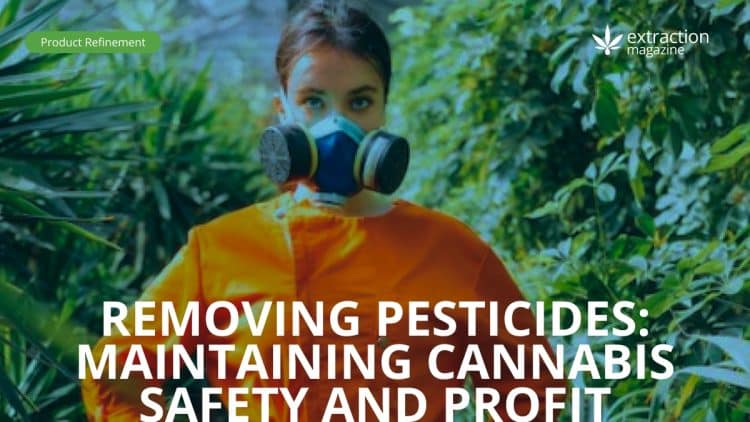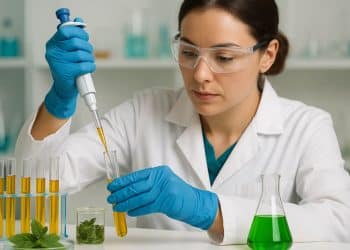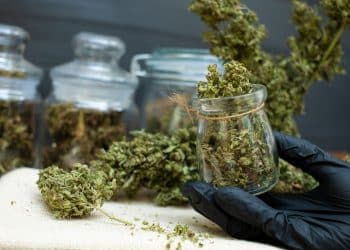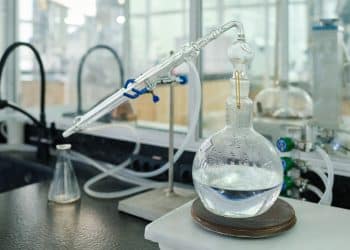Agriculture is a risky business. Farmers are constantly exposed to challenges ranging from environmental impact to price swings that may demolish a year’s worth of effort. To help minimize these hazards, many farmers turn to pesticides to protect crops against any risks associated with pests or infestations.
The benefits of pesticides are obvious, and in some cases they can provide as much as 60% boost in profitability. [1] At the same time, pesticides are controversial, as they can be detrimental to both the environment and human health. [2][3]
Cannabis farmers are now faced with the same dilemma: how to balance the profitability while minimizing negative consequences?
The Risks of Pesticide Use on Cannabis Plants
Depending on the intended use of the plant, there are different risks associated with pesticides. Considering plants used for textiles, like cotton, the health risk for consumers is very low. [4] The same is typically true for food based plant products. [5] Pesticide consumption through food may be higher, but the exposure generally falls below a threshold considered dangerous to the public. In both cases, consumers are protected from these chemicals because of how they may be absorbed into the body. Very little insecticide is absorbed through the skin, and while some may be absorbed orally, stomach acids and the digestive tract provide enough natural defenses.
The most harmful form of exposure to pesticides comes in the form of inhalation. [6] Studies indicate that pesticide use on cannabis does remain on the product by the time it reaches the market, which may harm users. [7] That being said, not all pesticides are equally dangerous. That same study determined that more than 350 forms of pesticides can be used to aid cannabis growth, not all of which pose a risk for human consumption. The solution to this problem may rely on regulation and standardization of policy towards pesticide use.
Regulating Pesticide Use for Cannabis
Beyond the health risks associated with pesticide use on cannabis serious concerns are related to the legal status. Because cannabis remains federally illegal in most countries around the world, it has become impossible for global standards to be set for safe pesticide use. Instead, the regulation falls to smaller regions to regulate themselves, which can lead to conflicting rules.
Take the example of California and Oregon. These two states border each other, and while they both permit medical and recreational cannabis, their stance on pesticides varies greatly. California offers general restrictions where the active ingredients must be “exempt from residue tolerance requirements and from regulation” as well as “the product would not be legally considered a use in conflict with the registered label”. [8]
By contrast, Oregon has a specific list of permitted pesticides, creating clear limits on what farmers can and can’t use. [9] This means that while there may be some overlap in terms of which pesticides are permitted, that is not necessarily true.
Different states may be prioritizing certain aspects of pesticide use over others to lead to specific outcomes. Allowing more pesticides may lead to increased yields, sales, and tax revenue for the state. On the other hand, if consumers are healthier, they may live longer, which could also lead to an economic boost over a longer period of time, with the added benefit of a healthy populace. There is no clear answer, and both choices have ambiguity in terms of what is the right decision.
The Regulatory Solution to the Pesticide Problem
The most obvious solution in this case would be to allow federal legalization and regulation of cannabis. By doing so, a national standard could be set determining a bare minimum of safety standards for pesticides used in cannabis farming. This could be achieved by finally allowing research on cannabis to be performed at a federal level, which would help to remove any subjective biases based on ulterior motivations.
From there, states may choose to limit specific pesticides further, but that would be based on a complex variety of factors. California and Illinois, though both permitting the sale and growth of cannabis, are remarkably different environments. So in addition to the previously mentioned profits vs. health motive, states may also wish to factor in environmental impacts.
This regulation would also provide the additional benefit of allowing interstate cannabis commerce to develop, similar to California wines or beer companies based in the Midwest that are available across the United States.
The Key to Profitability without Pesticides
Regulation presents the simplest solution, but legalization is also unlikely. In the meantime, cannabis growers need to take action into their own hands. One of the best ways to balance profits with safety is to focus on organic farming practices. [10] On the surface, this may seem counterproductive as organic techniques can lead to an average of 15% lower yield. [11]
Additionally, to mitigate any risks of infestation, further investment is needed into modern technology like drones, soil, and leaf monitoring systems. This allows farmers to catch infestations early, and provides a renewable and sustainable solution. By not having to buy pesticides on a regular basis, this could lower costs in the long run. For cannabis farmers, who have a consistent demand and are able to sell at high prices, this may prove beneficial.
Additionally, to make up for the lower yields, organically grown cannabis can be used as a marketing strategy. One study found that approximately 50% of food shoppers are willing to pay more for organic produce over conventional, even with prices extending as much as 50-70% higher. [12] This may not be the right choice for everyone, and price sensitive customers may still prefer a cheaper alternative that relies on pesticide use.
For those farmers who opt to go organic, the increased investment and falling yields could ultimately be offset by higher market share and increased profit margins. Doing so may not only lead to higher profitability, but also minimize environmental and health risks associated with pesticide use.
References:
- Willbur, Jaime F., et al. “Meta-analytic and economic approaches for evaluation of pesticide impact on sclerotinia stem rot control and soybean yield in the North Central United States.” Phytopathology 109.7 (2019): 1157-1170.
- Tudi, Muyesaier, et al. “Agriculture development, pesticide application and its impact on the environment.” International journal of environmental research and public health 18.3 (2021): 1112.
- Jeyaratnam, J. “Acute pesticide poisoning: a major global health problem.” World health statistics quarterly 1990; 43 (3): 139-144 (1990).
- Damalas, Christos Asterios, and Seyyed Mahmoud Hashemi. “Pesticide risk perception and use of personal protective equipment among young and old cotton growers in northern Greece.” Agrociencia 44.3 (2010): 363-371.
- Culliney, Thomas W., David Pimentel, and Marcia H. Pimentel. “Pesticides and natural toxicants in foods.” Agriculture, ecosystems & environment 41.3-4 (1992): 297-320.
- Tudi, Muyesaier, et al. “Exposure routes and health risks associated with pesticide application.” Toxics 10.6 (2022): 335.
- Taylor, Amelia, and Jason W. Birkett. “Pesticides in cannabis: a review of analytical and toxicological considerations.” Drug testing and analysis 12.2 (2020): 180-190.
- California Department of Pesticide Regulation. (2021, January 15). Cannabis Legal Pesticide Use. Retrieved July 14, 2023
- Oregon Department of Agriculture. (2023, February 2). Guide List for Pesticides and Cannabis. Oregon.gov. Retrieved July 14, 2023
- Victory, Kerton, et al. “Evaluation of potential hazards during harvesting and processing cannabis at an outdoor organic farm.” US Department of Health Human Services Centers for Disease Control Prevention: Cinncinati, OH, USA (2017).
- Knapp, S., van der Heijden, M.G.A. A global meta-analysis of yield stability in organic and conservation agriculture. Nat Commun 9, 3632 (2018).
- Stolz, Hanna, et al. “Consumer attitudes towards organic versus conventional food with specific quality attributes.” NJAS: Wageningen Journal of Life Sciences 58.3-4 (2011): 67-72.
Updated July 2023












